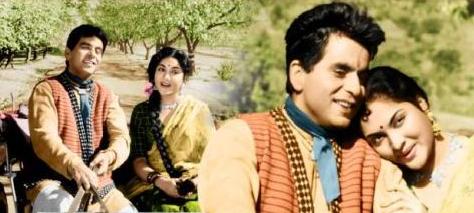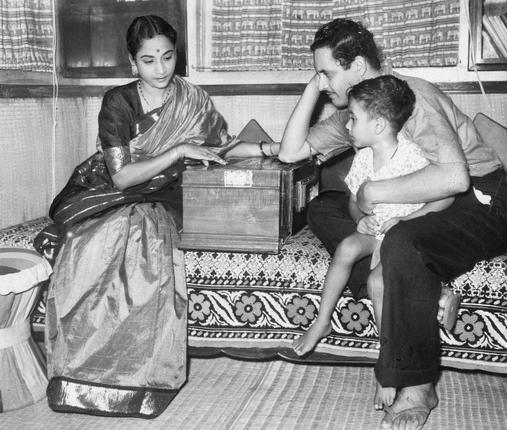Feedback Form:
Today I shall describe three different situations from any first hand experience.
1. I was trying to sell a training programme for the vice presidents and senior vice presidents of reasonably large and fast growing private bank. The discussion was being held with an exceptionally sharp and forthright HR head. His concern was about how could he ensure that his well defined objective will be met during two days training.
My presentation had included feedbacks from officers of similar status in a larger bank. I rolled back the presentation and showed him those feedbacks. I hoped that he would be impressed. Politely, he brushed these aside and said, “normally trainers have a knack of creating fast paced activity. In the bonhomie that follows no one writes the ‘real’ remarks. Everything oscillates between good and excellent”.
This set me to thinking. I looked back and realised that whatever he said was more or less true. Two possibilities came to my mind. Either we were really good or we needed to ensure that the ‘real’ comments come out from the participants.
2. Recently a tall and smart young man came to meet me. He said that he was a trainer and has been conducting courses for the past three years, on management of personal wealth. His courses are conducted in one of the five star properties, and the response is reasonably good. Invariably, he takes feedback forms from the participants. Only recently one of the participants wrote in his comments that the trainer spoke so fast that he could not understand anything. The feedback brought home a number of revelations – that the participants often do hesitate to write their real comments. It is so because most of us are not assertive. Equally important was the fact that the trainer, nay, not anyone should speak fast. If the objective of communication is conveying the ideas, these must be achieved. How? By modulation you speech, that is by bringing about variance in pace, pitch, pause, emphasis on the keywords and the tone. Modulation of the voice is recommended for everyone. But for public speakers, advocates, lecturers, it is a must. The young man told me that he would have continued speaking fast but for this one assertive participants, “real” feedback. Surely, he would be a much better trainer now and owes the success to the feedback form alone.

3. On the 14th of this month, I left for Delhi by the Rajdhani Express. Ever since the cheap airlines, have started operating, the charm of air travel has gone. Earlier, one would have a nice breakfast, or a good meal depending upon the time of the flight. And all from a five star flight kitchen. Now, you have to buy your own sandwitch, or a packet of biryani. And I would not pay twice the airfare just for a free meal.
While travelling I got the news that my sister had fallen sick and she was admitted in a leading hospital in South Delhi. On reaching there, we would sit out as she was in the ICU. There were two types of chairs. One which could be turned as sleepers. These were extremely uncomfortable to sit. Besides, there would be more attendentants than the number of chairs. Though the place was supposed to be air conditioned, there were many mosquitos. The pesticide sprinkler would come more than once everyday, but the mosquitos seemed to reappear just as soon has he left. I didn’t see anyone cleaning or mopping the place. Families of four patients including my sister occupied most of the chairs.

In any case, we were more concerned about the patients. Medical care seemed to be good. Everytime the Doctor would come to examine the patient, he/she would politely talk to the relatives of the patient concerned.
After four days, my sister had recovered to the extent that she was moved to a single room. At this time, the sister-in-charge of the ICU gave a feedback form to my niece. So far we had been hapless watchers and mute listeners. Now it was the time for us to express our grievances. My niece poured out and wrote about all we had seen and experienced.
In the single room we found that there was a big sofa and two chairs which were rather unclean. Though the room was large, the maintainence was rather poor. The glass overlooking the garden had not been cleaned for days and gave a rather shabby look. Even the bathroom was not clean and properly sanitized. Meanwhile, my nephew had come in the room. Finding these shortcomings, he started checking the other amenities. When he tried to open the locker, it wouldn’t. He had brought with him DVDs which my sister liked, but the DVD player wouldn’t work.
Meanwhile, a supervisor came from the ICU and pleaded that my niece change the feedback. She even brought a new feedback form. On the other side, my nephew complained that the locker was not opening, the DVD player was not working, the glass window needed to be cleaned and the bathroom did not have soap and other accessories. Charging patient room rent equal to that of a five star hotel, and not providing facilities was very unreasonable. However, now there was a difference. As soon as the complaints were lodged, the hospital staff swung into action. Some came and cleaned the glass. Soap, shampoo, body lotion, and even the shaving kit was placed in the bathroom. Since the DVD player did not work, it was promptly replaced. The floor was thoroughly cleaned, re-cleaned and sensitized with profuse apologies. In short, they did all to please the patient and the attendants alike.
You may call it the power of the feedback form. Make it a point to fill feedback forms assertively whenever there is an occasion.
Thank you.
Category: Uncategorized
Murphy's Laws
Most would think that Murphy was a pessimist. His pessimism alone drove him to be a negative thinker. In the circumstances, it is neither necessary nor prudent to take him or his laws seriously.
What does Murphy say? And what is the implication of his controversial laws?
This is what I propose to share with you, today.
Murphy’s most talked about law is:
‘If anything can go wrong it will.’ Corollaries are interpreted by many as below:
1. Anything is not as easy as it looks. To me, this is a valid caution. Often times a task appears a bit too easy. It is so because we don’t all the aspects. Thereafter the difficulties that we face in completing the task leave us discouraged. So, if we keep this dictum in mind, we shall be better prepared to do our own job surmounting whatever difficulties come our way.
This attitude could be either due to casual conduct or being over optimistic, over confident and taking things for guaranteed. Hope we all agree it calls for an improvement – for better productivity and happier life.
Yet, if we take it literally and don’t rely on the intent, it remains no longer a caution. Instead of being helpful the dictum will result in procrastination or even pessimistic. Both are equally undesirable.
2. Second corollary: Everything takes longer than you think is very similar to the first one and should be dealt accordingly.
3. Next: It has been interpreted that if there is a possibility of many things going wrong, the one which will cause maximum damage will be the first one to go wrong. I have no personal experience so therefore cannot comment.
4. The fourth corollary is interesting indeed. It says that if you perceive that there are four possible ways in which a procedure can go wrong and you circumvent these, than a fifth way will promptly develop. This again should be taken positively as a caution.
5. The fifth one is important and needs serious attention: ‘ Left to themselves things tend to go from bad to worse’.
Surely, one must not hope that anything important, be it a relationship, or a project which has hit a stumbling block will improve with time. No, never. It definitely requires your considered action or even ‘inaction’. But in both the cases it should be a deliberate and thoughtful decision. There are more. But we will discuss these some other time
Thank you
Wani Yoga – Lesson 12 : Part 3
Wani Yoga – Lesson 12 Part 3

Today, I’ll talk to you about another very important female playback singer I.e,. Asha Bhosle. The younger sister of Lata Mangeshker, Asha could not get any worthwhile opportunity for a long time. She had to settle for singing in B & C grade films. Music for these films was composed by lesser known music composers. So, there was no development so far her singing is concerned.
It was music director O.P. Nayar who gave h

er a big break. Besides, Nayar’s music became very popular. So, she had plenty of opportunities to sing. Her voice was recognized to be aesthetically sensuous. Many films during 60s & 70s would have cabaret dance sequences. While Helen was the choice performer, Asha would invariably sing those songs. Therefore, the opportunities for her increased. It was during this time that rivalry between the two singing sisters started. Nayar once said that Lata and Asha stayed on the same floor of the building on Pedder Road and they had one common maid. Whenever the maid informed Asha that Lataji had a wonderful recording, it would be enough reason for Asha to lose the poise of her vocal chord.
Starting with extremely popular songs in CID in 1956, Asha’s associations with OP Nayar continued till the middle of the 70’s. During this period Asha sang many unforgettable numbers. Her duets with Mohamad Rafi like “Maang ke saath tumhara maine maang liya sansar”, “Sathi hath barhana sathi re” created history in popularity.
Working constantly with music compare of substance results in great development of the singer. The music director is able to secure the best out of the singer and the process results in bringing excellence in the singing quality. Her association with Nayar lasted till the mid 70’s. by then, she had established her name as an aesthetically sensuous and also versatile singer. Music composers like SD Burman, Ravi and R D Burman engaged her to sing their songs. During this period her songs – ” aaja aaja tu hai payar mera, alha alha ikrar mera”, “oh haseena zulfu wali jane jahan, dhonti hai kis ke nishan…, piya tu abh to aaja” brought her an immense popularity.

In spite of that she was stereotyped. It was music director Khayam who realized that if Asha could sing at a scale half a note lower she would do be able to sing Ghazals. He ensured that Asha reduced her scale by half a note.

With the reduction of the pitch by about half a note a new Asha the ghazal singer came to life. Ghazals comprise a totally different genre of singing. Now, Asha could sing these very well. The Rekha starrer Umrao Jaan is the best example.
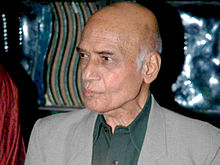
What method Khayam adopted is not known. But in practice of ‘Wani Yoga’ we have various exercises and procedures by which we can achieve this objective of lowering the normal pitch on which a person speaks as well as that of singer. In the same manner some other exercises when carried out consistently can help in raising the normal pitch of a person.
Human voice is dynamic. Big changes can be brought about in it. You don’t have to think that this is a God given gift and therefore you have to live with it. Often times we have executives complaining that their voice sounds that of a lady and vice a versa. These attributes of human voice can be all together altered with wani yoga.
Asha has sung more songs than any other singer in the world. She is featured in the Guineas book of work records. She has also received many awards – both from the music field and national recognition. She has earned Padma Vibhushan among others.
Thanks for your time.
Wani Yoga Lesson 12 – Part 2
Regarding Wani Yoga , in my last post, I talked about the talent and development of Lataji’s great singing. The other famous female singers of the same era are many. Today, we’ll go forward talk about Geeta Dutt. There Asha Bhosle, Suraiya, Runa Laila and Anuradha Podwal. Each of them has her own voice personality. They have learnt classical Indian Music from well-Known Gurus. Some of these singers could have also achieved excellence on their own and working with great music composers like Naushad, op Nayar, Shanker Jaikrishan, C. Ramchander, Madan Mohan and others. Their achievements have been are driven by the unsuitable hunger for some immortal songs. And all of them have worked real hard.
You might ask, if the singers have gone through structured or unstructured with rigorous training, then how does Wani Yoga come into the picture?
Any form of yoga requires consistent and constant. Riyaaz or ‘abhiyaas’.
What is Abhiyaas?
Abhiyaas is practice with devotion with a passion to learn. Following any passion, be it concerning art or science needs years of ‘Abhiyaas’ to culminate to its full bloom. Only then it leaves an indelible mark in the society. And, Abhiyaas about singing is ‘Wani Yoga’. Your own active listening improves the quality of your voice. Your own passion for music creates unforgettable combinations of ‘Sur and Taal’ of songs that haunt millions of followers.
Geeta Dutt:
An enchanting singer – her songs put the listeners under a strange spell. Even prosaic messages of her simple songs keep on ringing in your ears:
Babuji dheer chalna, pyaar mein zara sambhalna…..or
Aayee Meherbaan, Bhaithiye jaane jana; Shauk se lijiyeji, Ishq ke inttiyaan……or
Mera Sunder Sapna beet gaya……or
Aye Dil mujhe bata de, tu kispe aa gaya hai, Who kaun he jo aakar, khabon mein cha gaya hai…
And list in endless.
What do you need?
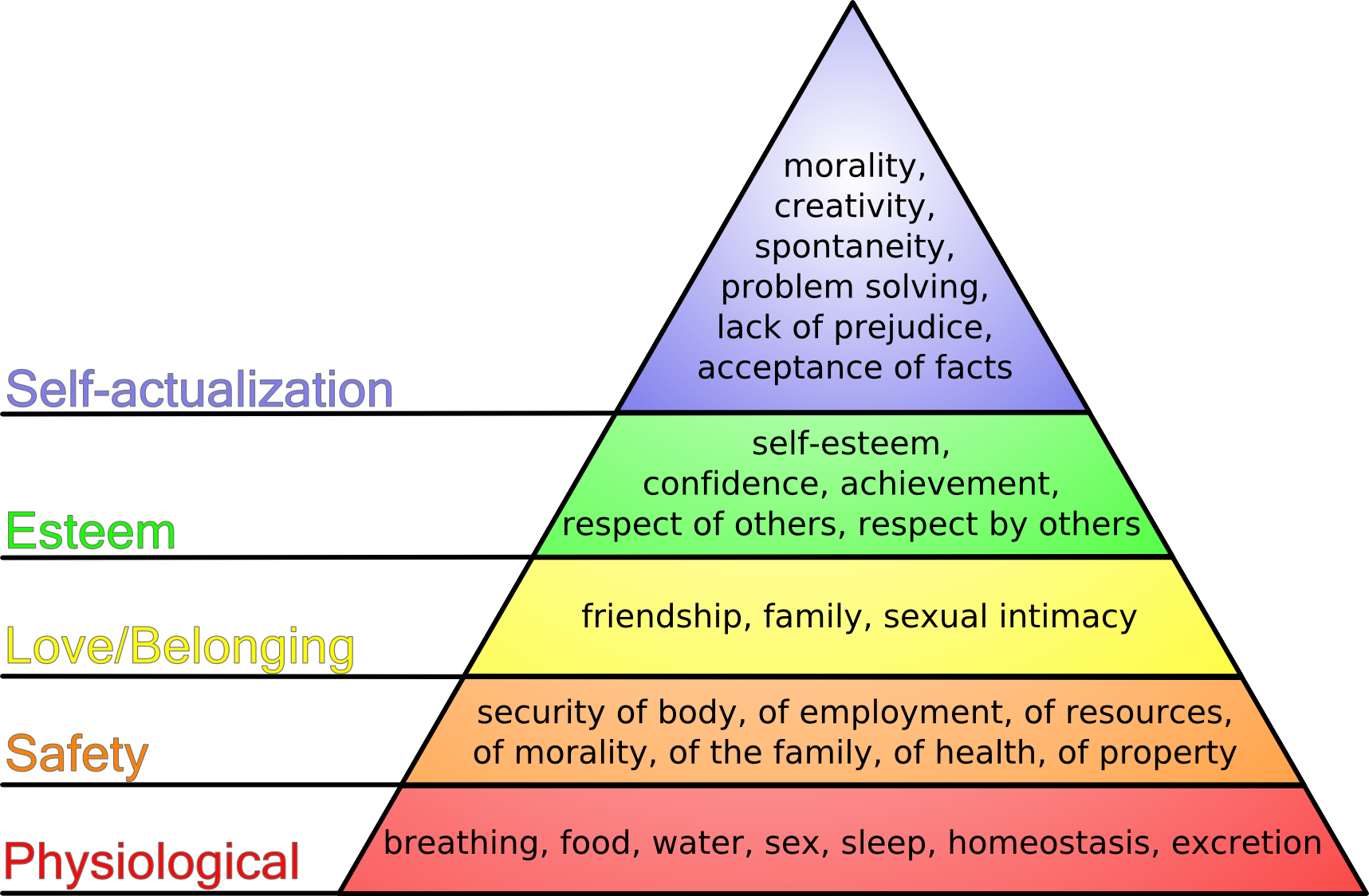
Now a days, life is full of stress. Stress is the caused by multifarious reasons. Firstly, there is work pressure. This has increased due to the ever increasing competition. Life in the city is also becoming difficult due to distances and slow moving traffic. You take more time in travelling from home and to your work place than you ever did in earlier times. Pollution is another major factor that saps your energy. On the one side you have less time for your productive work, with reduced energy level you tend to take more time in completing your daily tasks. So time-management becomes another issue.
So what should you do? You cannot change the environment, the way the society is moving forward, the social conflicts are increasing. But you can certainly do one thing. Change yourself. Bring about a change in your personality, your perspective, the way you look at things, and the way you solve your daily problems.
In order that you successfully do so you need to recognize what you needs are. Your own needs specifically! While overall our needs may be the same but these differ due to reasons like our personality, family background, requirements etc.
Needs have been classified by Maslow’s famous pyramid of needs theory.
Keeping these in your mind you may define your own needs. This need not be done in one sitting. But what you can do is to write a broad overview first, and then by contemplating on it on a daily basis you will be able to develop the clear chart of your personal needs. The biggest advantage of such an exercise is that the burden that one carries due to mental fog will be removed and you will start looking at things clearly.
Furthermore, it is only after clearly defining you own needs that you can chart out a plan of action to achieve these. It will also enable you to deal with the stress problems. Of course, this will be you first step. A lot more will need to be done. But then you must appreciate that this is for your own life. Your constant efforts to improve will undoubtedly be enjoyed by you. Besides, these will bring about better results. Further on this in my next blog.
Thank you.
Exploring a new Route
Yesterday, I started from office around 5pm. The dark of the evening was still away. I thought, reaching home early, I will have to walk in the podium garden. Lots of children of the society play all kinds of outdoor games at that time. Many maids with the small babies in the prams which is an uncommon sight in Mumbai. Elders leisurely walk on the walkway. I thought let me also join them and also witness the lively joy of the juniors and seniors in the garden.
While driving back home, I got another idea. Normally, we drive back through the BPT road paying a nominal toll of Rs. 30/-. A friend of mine had told me that there is another road which takes about half km more but there is no toll. I thought to myself “why not explore this new road”?
So, we found a road turning right. Thinking that eventually it will join our normal route, we ventured into this new found road to the right. We drove through their rather zigzag road with lots of turnings to left and right and vice versa. To our big surprise we reached a dead end. Unlike other road that end, this place was full of life.
We had reached Bhaucha Dhaka (Ferry Wharf). While driving to office or back home I had seen buses with sign “Bhaucha Dhaka” often. There was a bus terminus. On one side there were fisher men and women moving around in their large baskets on their heads. On the other side I saw lots of people rushing towards the small passenger boats. I knew that some people who stay in Karanja, an island across the sea daily travel in these small ferries to and fro coming to work in Mumbai. Today, looking at this boat station gave me an uncommon joyful experiences.
I took some pictures of the place and the colourful boats which I would like to share with you.
Self-confidence
Your confidence depends on how you have been influenced by people around you till now. Be it your parents, your teachers, your friends and others you have been meeting. Some of the influences have created positive impact. ‘Yes, you can do it and you must try’. This motivates you to act even if there is some risk. ‘No, you can’t do it’, ‘it is not for you’ ‘what will others say when you fail’- these are some of the negative thoughts, instilled by people around you, or due to your own brooding. These hold you back.
Faith, Fear and Action are three most important ingredients of your self confidence. Today, everyone realizes the importance of self-confidence. Your career, your relations with others, your progress in life or even your reputation- all depend on your self- confidence. Your ability to overcome fears and your determination to take action even in adverse circumstances give it a boost. Anyone who wants to grow in life must develop ability to take some risk. Of course, you must not be a dare-devil. No need to deliberately expose yourself to great risk just to show off. Nor is there a need to take risk without thinking about the results. But some calculated risk of taking action to move forward in life is necessary.
Life is not a straight line. Like the waves in the sea, it moves up and down. There is low tide and there is high tide. There could be storms like we have in the ocean. You have to accept the challenge and move forward. Your determined action further enhances your faith and allays your fears. Consider that your body is a ship. And your mind is the captain of your ship. Just as the captain of the ship has to take decisions and take action all the time- 24×7, you must do that too. This will generate the required self-confidence. And, you will start viewing the life differently. It will no longer be a burden that tires you. It will be an interesting journey that will keep you in good cheer.
Some other suggestions to build your confidence and conquer your fears are:
- Belief in yourself
- Associate with confidence people
- Keep motivating yourself by dwelling on positive thoughts
- Be the master of your ship of life.
- Never remain idle.
Thank you.
The Neutral No!

During Negotiations if you don’t agree with your opponent you have a right to say no. But it should be a ‘neutral’ No. What is a neutral No? It is not harsh. There is no anger in it. It is not even apologetic. If you are known to be a nice person, when you have to say No the best thing is to become neutral.
It is important to remain on the issue and not allow any digression. It is equally important not to allow your ego to come into the picture. Often times, even when there is a possibility of a solution, it does not materialize simply because of individual egos. By sticking to the issue and remaining neutral you leverage you strengths. There are certain does and don’ts that you must follow while negotiating with difficult people:
- Your language should remain polite but firm.
- You should listen actively to what the other person is saying.
- You should try to assimilate the hidden meaning behind his/her words and strategize you arguments accordingly.
- You have to be really quick witted during negotiations.
- You should never say No using light-weight reasons. Preparation for an important negotiation is crucial. While doing your homework you should visualize what your opponent is likely to use as his/her negotiation weapons or arguments.
- You should be prepared to meet these squarely.
- You should remain alert and not be swayed by any emotional blackmail.
It is always good to have a nice image but not at cost of your personal interests. Managers must particularly use their discretion aptly during discussions with their higher ups.
‘Wani Yoga’ Lesson 12
In the last lesson (11) I had described some exercises which are helpful for enhancing resonance in the voice. But resonance is primarily a quality the male voice. What about the female Voice? What are the types of female voices?
For western classical singers the female voice can be classified as:
- Soprano: This voice type represents the highest vocal range ability
- Mezzo soprano or “half soprano”: vocal range that lies between soprano and the contralto voice type.
- Contralto: the voice range which is the lowest female voice type.

Jane Eaglen, famous soprano singer
Patricia O’Callaghan well known for ‘half soprano’ singing
 Karneus Katarina – famed contralto singer
Karneus Katarina – famed contralto singer
However, when we look at the scene in India, famous female singers are known for their unique voice quality. The composers choose the singer as per the demand of the situation in the film. I am talking about female playback singers and not classical singers because they are better known to the people at large. Nevertheless, the importance and greatness of the classical female singers cannot be exaggerated.
While there is no doubt each one of them was endowed with unmatched talent, the development of the voice varies remarkably. This happened due to their learning process and the way music composers worked with them to achieve the desired result in singing.
Lata Mangeshkar
It may be surprising, to many, to know that Lata Mangeshkar was rejected by many composers. They felt that her voice was very thin. In fact if we listen to her songs in very old movies, we will find that her voice was really thin. But it possessed a unique quality of a child’s innocence. However as the years passed, her voice matured. It is unrivaled even to this day. To me it appears that her singing grew as Lata Ji is seen in the following 2 pictures.
 Lata Mangeshkar in her younger days
Lata Mangeshkar in her younger days
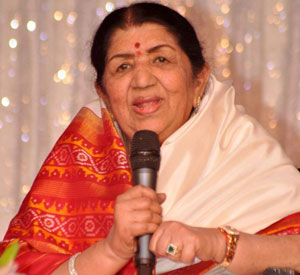 Lata Mangeshkar- her voice matured retaining its malady till date
Lata Mangeshkar- her voice matured retaining its malady till date
Her songs truly reflect her versatility. She sings any type of song with unique ease. Invariably, her songs please the listeners immensely. The range of her voice and the poise in her songs are remarkable indeed. Her voice is very sweet and very attractive. Besides it has stood the test of time. If anything it has grown better and better.
As I like to talk about a number of well known female singers, this lesson no 12 will have many parts.
Thanks for visiting my blog.
Wani Yoga – Lesson 11
Wani Yoga Lesson 11
I will now describe some simple exercises which will bring resonation and make your voice rich. But these exercises must be done consistently. And, you must remain relaxed while doing these exercises.
Sit comfortably on a chair or on the ground with crossed legs. Breathe in deeply and vocalize the following:
Exercise 1
Oo, Oo, Oo, ( Use your speech organs in an exaggerated manner while speaking these vowel sound.
Aw, Aw, Aw,
Ah, Ah, Ah,
Ay, Ay, Ay,
Ee, Ee, Ee
Oh, oh, oh
Repeat 3 to 5 times as can be comfortably done.
Exercise 2 : Taking a deep breath vocalize the following:
oo, oo, oo……mmmmmmm
(while humming the m sound should keep your upper and lower teeth apart. Let the lips touch each other)
Next, repeat with other vowel sounds:
Oh, oh, oh ………… mmmmmmmmm
Aw, Aw, Aw …………mmmmmmmmm
Ah, Ah, Ah ………….mmmmmmmm
Ay, Ay, Ay …………. mmmmmmmm
Ee, Ee, Ee ………….. mmmmmmmm
Exercise 3 :
Speak the following line on one note (do) or (sa)
Many military matters must not mount
Then, repeat the same in other notes of the octave
Sa, re, ga, ma, pa, dha, ni, sa
OR
Do, re me, far, so, la, te, do
Some of the other singers known for their resonant voices are:




Some additional speakers with resonant voices are:


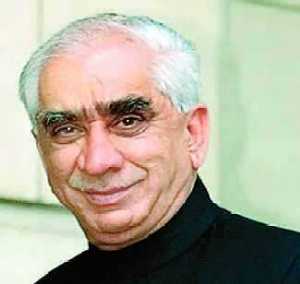

Disclaimer: The exercises recommended are harmless, however any person before undertaking my consult his / her physician. The blog owner will not accept any kind of direct or indirect responsibility.
